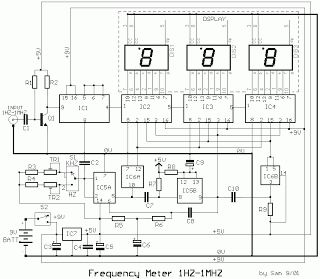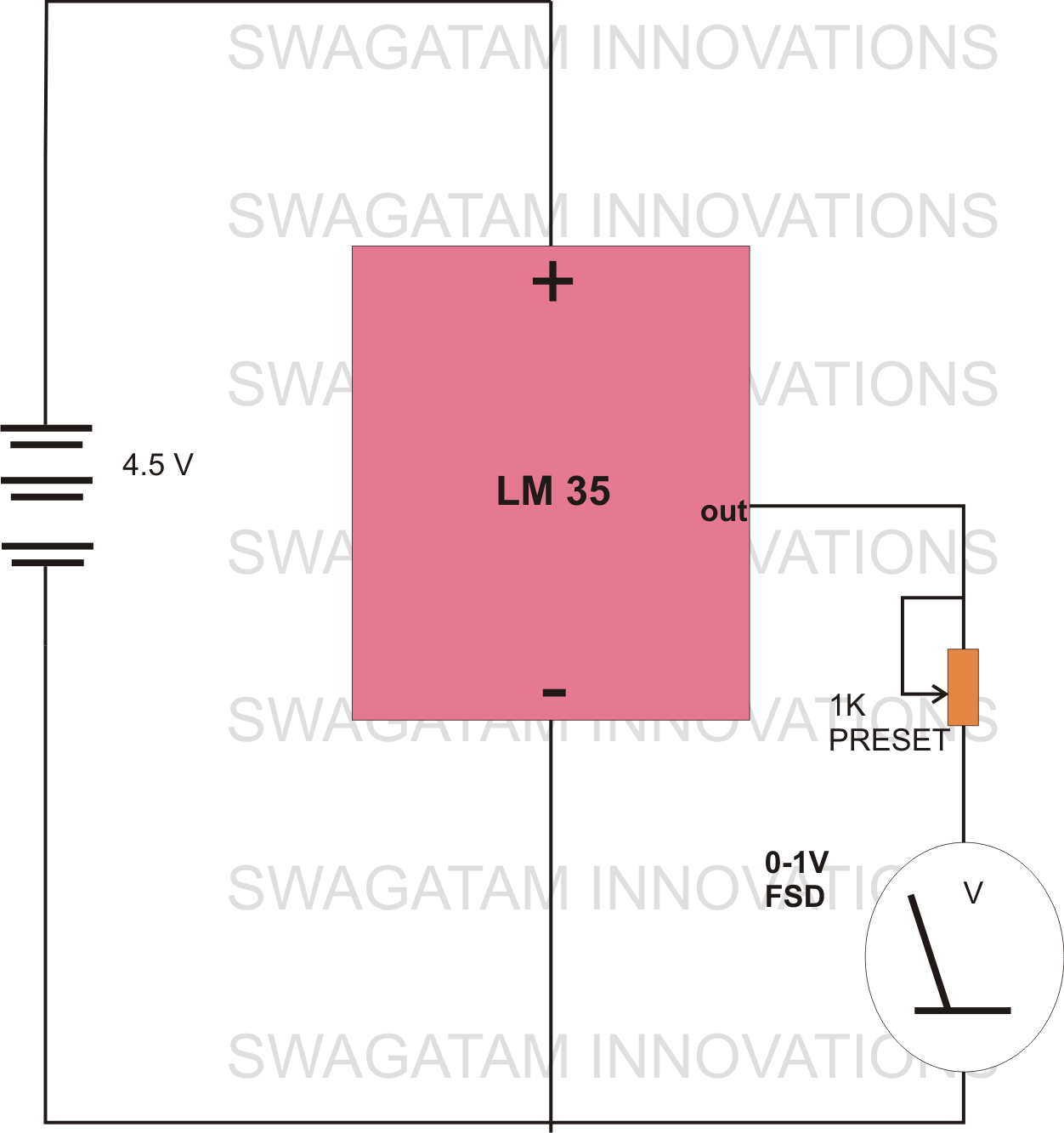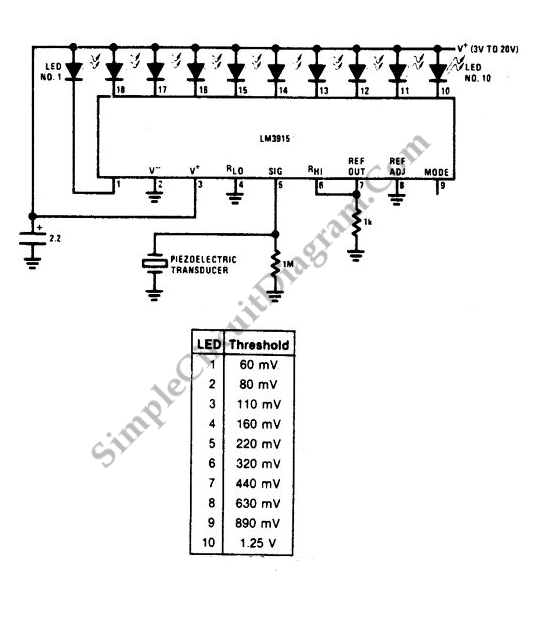
5 mA S METER

The circuit designed for a 5 mA meter movement utilizes a two-stage voltage amplifier comprising transistors Q1 and Q2. An emitter-follower output stage, represented by transistor Q3, functions as an impedance-matching stage. The audio frequency (AF) input for an S-9 reading is specified at 25-30 mV peak-to-peak (P-P), while the full-scale input ranges from 50-60 mV P-P. The frequency response of the circuit spans from 500 Hz to 10 kHz, as referenced in M.A. Chapman's article in Solid-State S-Meters, Ham Radio, March 1975, pages 20-23.
The circuit operates by amplifying low-level signals to drive a 5 mA meter movement effectively. The two-stage voltage amplifier configuration, consisting of Q1 and Q2, enhances the input signal while maintaining linearity and stability. The use of transistors allows for efficient amplification with minimal distortion, which is crucial for accurate meter readings.
Transistor Q3 acts as an emitter follower, providing high input impedance and low output impedance. This characteristic is essential for impedance matching, ensuring that the circuit can interface effectively with various signal sources without loading them down. The specified input voltage levels of 25-30 mV P-P for an S-9 reading and 50-60 mV P-P for full scale indicate the range of input signals that the circuit can accurately process.
The frequency response of 500 Hz to 10 kHz indicates the operational bandwidth of the circuit, making it suitable for audio frequency applications. This range is particularly relevant for applications in radio communications and audio signal processing, where maintaining fidelity over this frequency range is vital for effective signal representation.
Overall, the design demonstrates a well-thought-out approach to signal amplification and impedance matching, ensuring reliable performance in practical applications. The reference to M.A. Chapman's work further underscores the circuit's credibility and relevance within the field of electronics, particularly in the context of solid-state meters used in amateur radio.Circuit designed for 5-mA meter movement uses two-stage voltage ampilfer Q1-Q2 with emitter-follower output Q3 serving as impedance-matching stage AF input for S-9 reading is 25-30mV P-P and forfull scale is 50-60mV P-P Frequency response is 500 Hz to 10 kHz-M A Chapma, Solid-State S-Me-ters, Ham Radio March 1975 p 20-23 🔗 External reference
The circuit operates by amplifying low-level signals to drive a 5 mA meter movement effectively. The two-stage voltage amplifier configuration, consisting of Q1 and Q2, enhances the input signal while maintaining linearity and stability. The use of transistors allows for efficient amplification with minimal distortion, which is crucial for accurate meter readings.
Transistor Q3 acts as an emitter follower, providing high input impedance and low output impedance. This characteristic is essential for impedance matching, ensuring that the circuit can interface effectively with various signal sources without loading them down. The specified input voltage levels of 25-30 mV P-P for an S-9 reading and 50-60 mV P-P for full scale indicate the range of input signals that the circuit can accurately process.
The frequency response of 500 Hz to 10 kHz indicates the operational bandwidth of the circuit, making it suitable for audio frequency applications. This range is particularly relevant for applications in radio communications and audio signal processing, where maintaining fidelity over this frequency range is vital for effective signal representation.
Overall, the design demonstrates a well-thought-out approach to signal amplification and impedance matching, ensuring reliable performance in practical applications. The reference to M.A. Chapman's work further underscores the circuit's credibility and relevance within the field of electronics, particularly in the context of solid-state meters used in amateur radio.Circuit designed for 5-mA meter movement uses two-stage voltage ampilfer Q1-Q2 with emitter-follower output Q3 serving as impedance-matching stage AF input for S-9 reading is 25-30mV P-P and forfull scale is 50-60mV P-P Frequency response is 500 Hz to 10 kHz-M A Chapma, Solid-State S-Me-ters, Ham Radio March 1975 p 20-23 🔗 External reference





